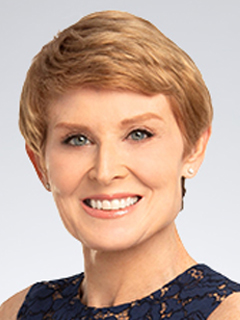Pricing pressures intensify in August
Inflation and unemployment are creeping up in tandem.

September 11, 2025
The consumer price index (CPI) rose 0.4% in August, which pushed the overall index up 2.9% from a year ago, its hottest annual pace since January. Prices at the gas pump, grocery store and for food away from home all accelerated. Some tariffs made their way into food prices. Food at home soared 0.5%, the hottest monthly increase since the height of pandemic inflation in June 2022.
Coffee surged 3.6% during the month, its fastest monthly pace since April 2011. Coffee prices jumped 20.9% from a year ago, the second fastest pace on record, but only by a few tenths. We will easily exceed the record as the full effects of the 50% tariffs levied on Brazil last month work their way onto store shelves.
The de minimis loophole, which enabled importers to send packages worth less than $800 to the US duty free, was eliminated entirely in August. Those imports were not counted in the official import data, often ran afoul of human rights violations and included shipments of illicit drugs and counterfeit items. The downside is that de minimis was used more heavily by low-income households to offset higher costs elsewhere.
Many shippers have scaled back in the wake of the end of de minimis, which covered more than a billion packages in recent years. That pushed up the costs of shipping to the US. Postage and delivery services increased for the second consecutive month and jumped 4.7% from a year ago, the fastest annual pace since January.
The core consumer price index, which excludes the volatile food and energy components, rose 0.3% in August, which pushed the core index up 3.1% from a year ago. That is its hottest pace since February. Durable goods prices, which are among the most sensitive to the initial round of tariffs, rose 0.4% in August, the same as July. That translates to a 1.9% increase from a year ago, the hottest pace since November 2022. Durable goods prices had been falling and dampening the overall rise in inflation for the better part of the last two and a half years; now they are moving up again.
Service sector inflation rose 3.8% from a year ago in August, the same as July. Shelter costs are finally showing signs of cooling, which should act as a drag on service sector inflation later in the year and into 2026. The challenge has been other services, which are accelerating again.
Core service sector inflation, which strips out shelter costs, rose 4.0% from a year ago, the same as July. That was its hottest annual pace in almost one year. Core services are running nearly 2% above the levels we saw in 2019, which are more consistent with the Federal Reserve’s 2% target on inflation.
Air fares and hotel room rates both rebounded in August, despite a sharp drop in the number of people out on vacation during the month. It was the second lowest August for workers out on vacation on record. Only August 2020 was worse.
The sticking point is wealthy households, which helped buoy Labor Day travel and are boosting service sector inflation. That is in addition to some spillover effects associated with tariffs. Dental services jumped at their fastest month-on-month rate on record in July but retreated in August. Much of the equipment and materials that they use are imported.
We are seeing some spillover of tariffs into the costs of vehicle repairs, which jumped 8.5% from a year ago. That is the fastest year-on-year pace in nearly two years. Tariffs on vehicle parts are starting to show up in repair costs, while demand for used vehicles continues to climb. It is only a matter of time before those higher costs filter into vehicle insurance costs.
Typically, tariffs represent a one-time bump in price levels. The uneven rollout of tariffs we have seen, coupled with aggressive stockpiling before they went into effect, means that the bulk of the boost to prices is ahead of us. Those gains will likely persist, given the tariffs in the pipeline.
The challenge for the Fed is to ensure that any inflation we see does not persist. The proximity to the pandemic-induced inflation makes it trickier. Consumers and firms are getting used to price hikes, which normalizes them and ups the risk that inflation expectations become unmoored. The shifts we are seeing are small when compared to the stagflation of the 1970s, but they are similar enough to give some on the Fed pause when weighing rate cuts.
The shifts we are seeing are small when compared to the stagflation of the 1970s, but they are similar.

Diane Swonk
KPMG Chief Economist
Bottom Line
Inflation and unemployment are creeping up in tandem. That is what the Fed expected would happen this year. It is much harder living those shifts in real time. The Fed is expected to cut short-term rates by a quarter point in September, but we expect doves and hawks on the Fed could dissent in opposite directions on that vote. That would not be unprecedented. The last time we saw it was in September 2019 when the Fed attempted to disentangle the effects of the trade war with China. That was a cake walk compared to what we are dealing with today.
Explore more

Summer heatwave continues
The super core CPI jumped 0.5%.

KPMG Economics
A source for unbiased economic intelligence to help improve strategic decision-making.

Birds of a feather no longer flock together
The Fed splits over timing & size of rate cuts.
Subscribe to insights from KPMG Economics
KPMG Economics distributes a wide selection of insight and analysis to help businesses make informed decisions.
Meet our team
